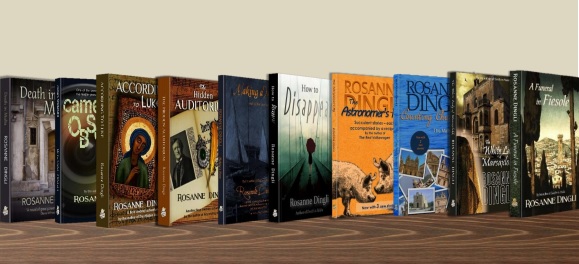 Image via Wikipedia
Image via WikipediaA regular novel of about 90 000 words takes about 5 or 6 hours to read end-to-end. That is, if you count all the time you spend reading, that's what it will add up to. Which means a lot of reading and a lot to remember.
Read-in-One-Sitting books are those you can read in one train ride, say. Or one visit to a dentist's waiting room. Or one stand in a long queue, or at a bus stop. They are books you can load onto your portable device, and enjoy in one hit. One lunch-break, or one ferry trip. How neat.
They are becoming quite popular, because they are cheaper than the regular novel. Some even come free. I have three of these Read-in-One-Sitting books up at SmashWords, at the moment, and they are all free. I am testing the market. You are invited to download them here.
How did I make them? It was not that hard. I used to write a lot of short stories in the past, and they were published as collections which have gone out of print. So I found four stories, and bundled them in pairs that seemed to go well together. I also found one of my old historical novellas that was under 20 000 words - which means it's easily read in under an hour. Great.
So I had two bundles of two short stories each, and a novella. I formatted them properly, following the instruction manual at SmashWords, uploaded them, and made simple covers using patterned wrapping paper and a bit of typography.
Can you do the same? Probably: look through your old files and find stories whose rights are entirely yours. Give them a good edit so that they feel fresh, correct and very readable. Make sure that the wordcount of each eBook you make is under 20 000 words. Read them aloud while timing yourself. Each book should not take longer than about 20 minutes to read. Just the right length for a commute, a long wait at the doctor's, or that lag time between lectures.
Decide how you would like to go: Kindle? Read the instructions at Amazon. SmashWords? Read their manual. Formatting for these two is rather easy - there are others that are slightly more complicated.
Upload your eBooks after you have made yourself some covers (preferably a bit better than mine!) and try to price them within reason, always remembering they are only little books that take no time to read and enjoy. If you realise that they make excellent 'tasters' for your kind of writing, you can use them as freebies to excite readers about your work. They might then purchase your longer works more eagerly.
Making these short Read-in-One-Sitting books becomes easier the more you make. You might find your readers coming back for more.




One further tip, having just done my first one. Do Smashwords first. Their manual is very clear and concise. Once you create a file that can upload reliably to SW, change the copyright info and it appears to post cleanly to Amazon without redoing anything else... Now, if I could just write short. Every short story I've ever attempted turned into a 90k word novel. Except the one that went 170k...
ReplyDeleteMatt - I used to write short all the time. I had it down to a fine art, and managed to put together three great collections of published and awarded stories. It's hard, but it's addictive and habitual.
ReplyDeleteBut writing novels is just as hard. It took me a while to handle the change: the thought rhythms are just not the same. Now I think I can only write long.
Writers like you are blessed with talent - you make it seem effortless.
Rosanne -- Thank you for your generosity in giving some highly stimulating information about this new world of digital publishing. I'm still making the transition from non-fiction to fiction and so my material is not yet ready, but you have given me clues as to the first steps to take towards the publishing stage.
ReplyDeleteAnd judging from the initial chapter of The Gospel of St Luke it will be every bit as good as Death in Malta! You deserve every success.
Hello there, Stephen! Thank you for your lovely comment: the publishing world is changing from month to month, and authors are forming relationships with their readers like never before. Cultivating a following is now as important as writing well and interestingly. We live in riveting times!
ReplyDeleteGood idea, if we can tailor the writing to what the reader wants, that is not a bad thing. For example what kind of books do people like to read on a train, where you read something each day in approximately 1/2 hour chunks at the start and end of each working day. Would it be a novel, short stories, novellas? Is it different from the books people pick up when they go on a plane?
ReplyDeleteWhat a good question, Hugo - the so-called 'airplane novel' could very well be joined by the 'train ebook'.
ReplyDeleteYes - the difference is quite clear. I know a number of writers who could join me in writing a lot of 'train ebooks'. Perhaps there could be download docks at railway stations and undergrounds, where commuters could get their daily reading fix.